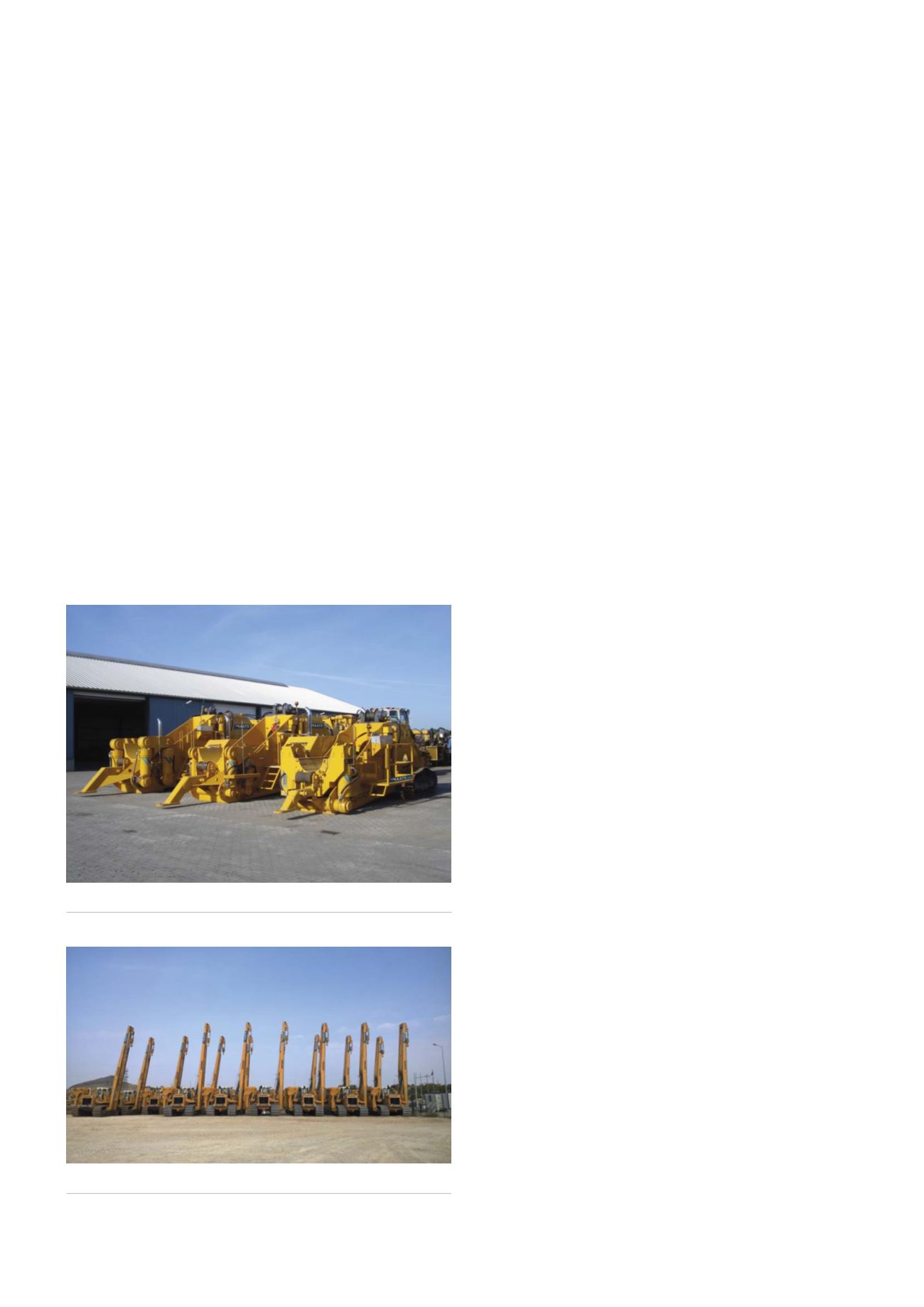
specific (key) equipment available as this might be a
requirement in a project prequalification procedure, as part
of proving a construction companies’ capabilities. There
are, however, some major issues that have an effect on the
profitability of owning such specialised equipment.
Maintenance and service
In order to live through its useful lifespan – even when it is
not actually used on a project, thus also when there is no
actual revenue to cover the costs – machines have to be
maintained. If necessary maintenance (and service) is not
performed, this will result in extra costs when the machine
has to be prepared to actually go on a jobsite.
Project diameters differ
In gas pipeline construction, there is a range of common
diameters between 6 in. and 56 in. For welding tractors
this obviously is not a problem, but for pipelayers
and especially bending machines, this means that a
construction company has to have machinery available for
all the diameters from 6 in. to 56 in., sometimes in larger
quantities. Operating in a global market, it is also possible
that less common diameters appear, such as 21 in., 44 in.
or 52 in., and as a result it is nearly impossible for pipeline
construction companies to be prepared for the whole
range.
Project size increases
As explained, the current pipeline construction industry is
dominated by large-scale projects, making the highs and
lows in demand for this specialised construction machinery
more extreme. In such cases, a basic equipment fleet is not
sufficient to cover the total equipment needs for these
projects.
Projects become more uncertain
Long-term planning an equipment fleet becomes more
difficult because of these large projects, specifically due to
financing and geopolitics.
)
Financing: The larger the project, the more difficult
the financing becomes. Even with support funds of,
for instance, the EU, European Investment Bank or
Asian Infrastructure Investment Bank, this can result in
possible long delays.
)
Geopolitics: Many projects are no longer solely for
local or national use. There is even an active strategy
within the EU to construct interconnecting pipelines
between different countries to make energy supply
routes redundant and make energy supply more reliable.
When more countries are involved, this does not make
the viability of a project necessarily larger as different
countries might have different interests. This can result
in years of postponing or even sudden cancellation of
projects, bringing uncertainty in when to invest in what
equipment.
Technical developments
Although the technical lifetime of a machine is long,
the regulations and requirements regarding the machine
may change over time. This can be for specific clients
or projects, a change in national legislation, or even the
change of a global standard. When owning machines there
is the need to keep them up-to-date at all times. Examples
from recent years are the requirement for a ROPS on heavy
machinery and the presence of a load monitoring system in
a number of countries. However, in some countries it is not
necessarily about the technical condition or specification
of machinery; some countries simply block the (temporary)
import for construction equipment beyond a certain age.
An equipment owner
To summarise, owning pipeline construction equipment
is sometimes necessary but it can be costly, and planning
investments for such equipment (which often only has a
limited usability) has become increasingly difficult because
of the ever-changing conditions that come with extreme
large and complicated projects.
In all this, maybe the most crucial factor is that project
prices are under huge pressure. This has an effect on the
whole chain of construction, not only on contractors, but
Figure 4.
Different machines for different project diameters.
Figure 5.
Large projects require a high volume of machinery.
36
World Pipelines
/
MARCH 2020








